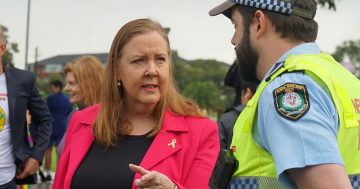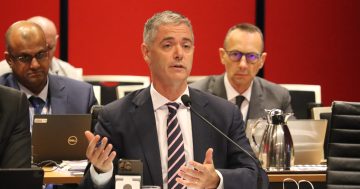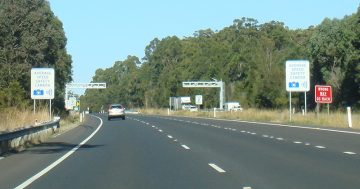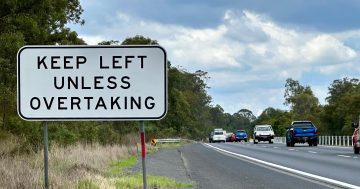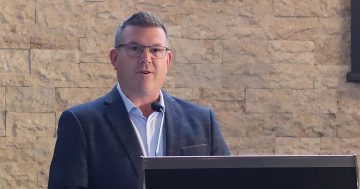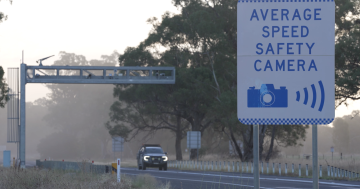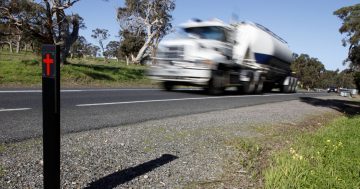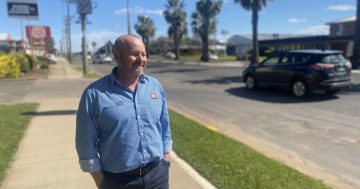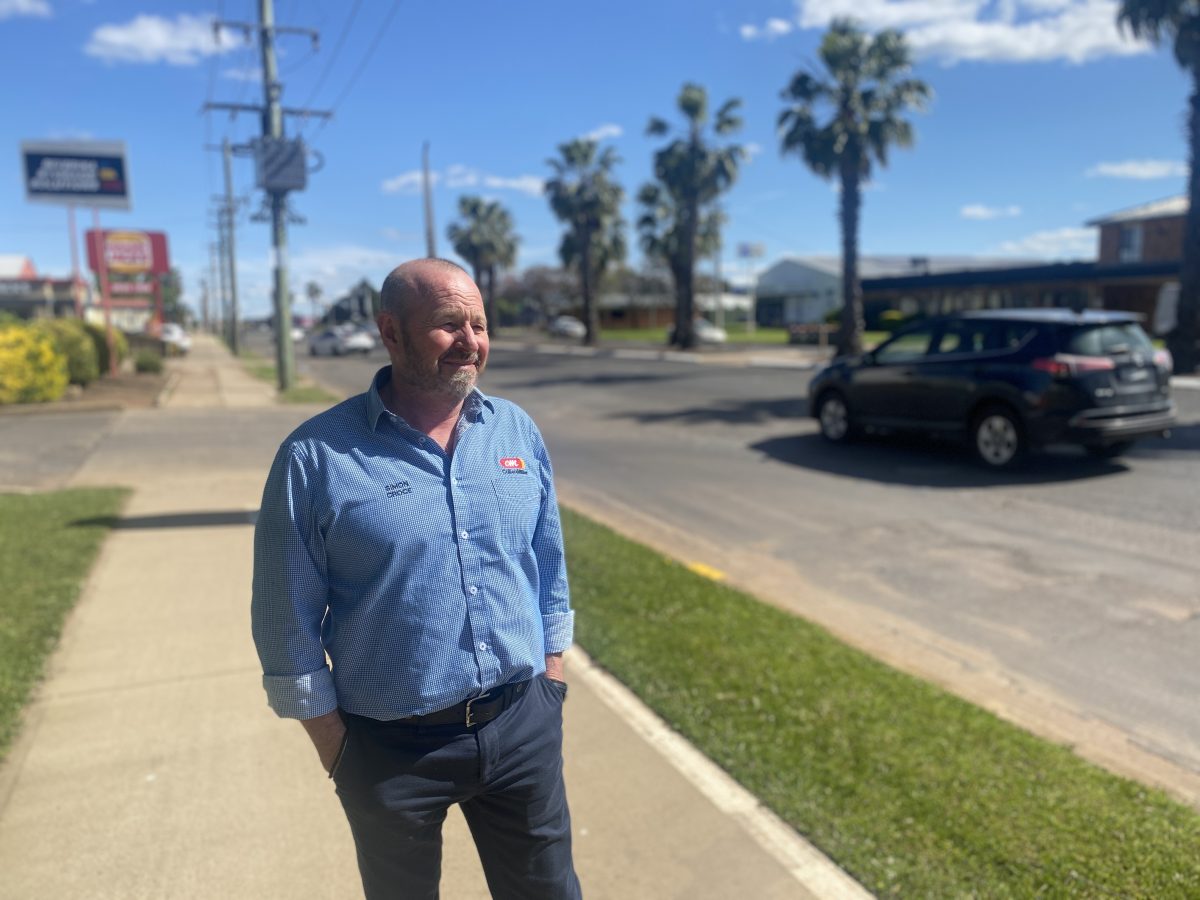
Simon Croce supports the banning of mobile hidden speed cameras. Photo: OIiver Jacques.
The NSW Government has begun placing portable warning signs next to roads that advise motorists a mobile speed camera is ahead, following a cabinet decision to effectively ban hidden mobile cameras by January 2023.
This decision was slammed by a peak road safety body, but welcomed by a prominent Riverina transport advocate.
In response to a question from the Labor Opposition in NSW Parliament, NSW Metropolitan Roads Minister Natalie Ward said more than 90 per cent of warning signs were already back in place.
“The NSW Government has almost completed rolling out 1000 permanent static signs across the New South Wales road network to remind drivers about mobile speed cameras and that they can be caught speeding anywhere, anytime. Less than 100 signs remain to be installed (in flood-affected areas in regional and outer metropolitan New South Wales),” she said in a written response.
This represents a reversal of the November 2020 decision by then transport minister Andrew Constance to remove warning signs before mobile speed cameras, which had an immediate impact. Revenue NSW data, reported in the Guardian Australia, indicated the number of fines where the speed limit was exceeded by 10 km/h or less went from 3222 in October 2020 to 27,855 by February 2021.
Griffith councillor Simon Croce, a long-time advocate for better roads and transport in the Riverina, welcomed the change. Speaking as an individual and not on behalf of council, he questioned the motivation behind hidden speed cameras.
“It was never about safety, it was always about revenue … getting a letter in the mail two weeks later saying you were going five km over the speed limit is not changing your behaviour, it’s changing your attitude towards police. That’s not how we want things to be because by and large the police do a great job,” he said.
“Fines are getting bigger, the loss of demerits is getter bigger and the time for getting them back is longer … a couple of offences and your licence is gone and your livelihood is gone.”
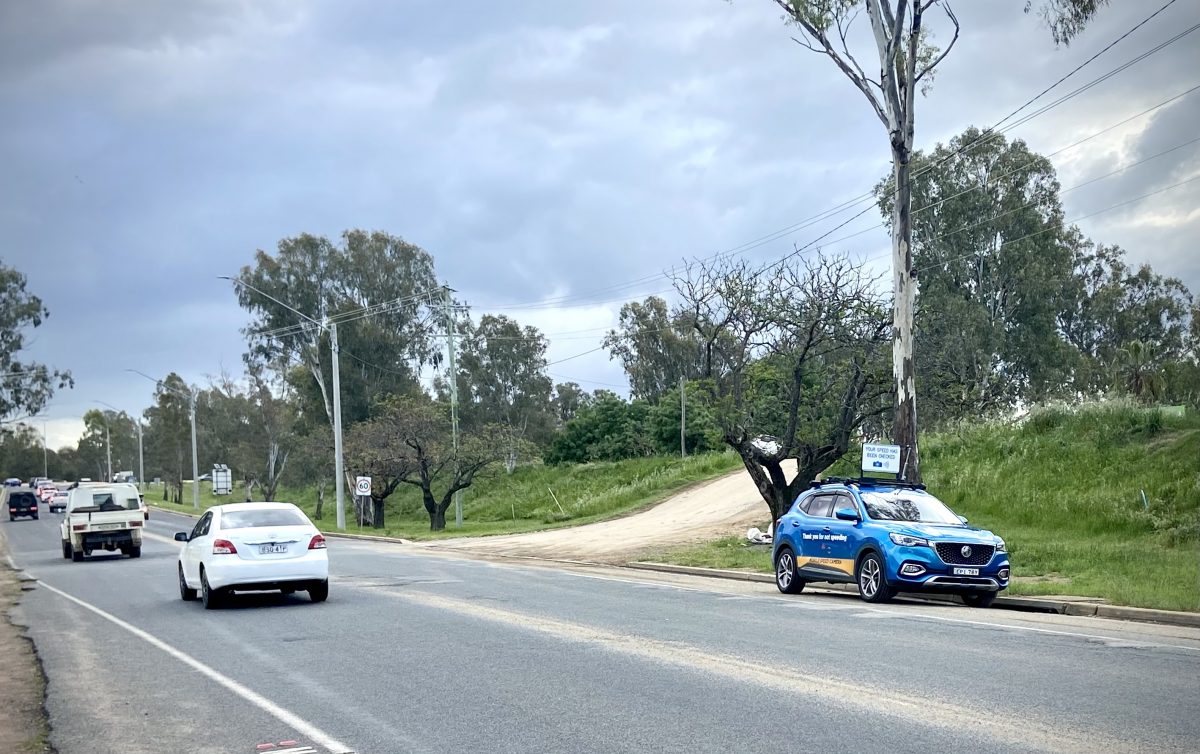
Sneaky speed cameras were a common sight on Wagga’s Travers Street, but they’ll soon come with a warning sign. Photo: Chris Roe.
The Australasian College of Road Safety (ACRS), however, was critical of the recent NSW Government’s reversal.
“The NSW Government has responded to public pressure rather than evidence on this issue. The evidence clearly shows that the unpredictable deployment of mobile speed cameras is crucial to realising their potential for reducing road trauma. The Government’s decision to undo this potential lifesaving measure is extremely disappointing,” ACRS CEO Dr Ingrid Johnston said.
“ACRS calls on all governments to make evidence-based road safety decisions, rather than on popular opinion or general sentiment … not knowing the location of a speed camera is only a problem for motorists if they exceed the speed limit.”
Mr Croce disagrees.
“We’re getting to the point that everyone is so paranoid that they’re staring at the speedo and not at anything else. If you put enough cameras everywhere, you’ll end up with zero deaths probably, apart from people dying of boredom. But where are you going to draw the line?”
“The answer to saving lives is better roads and better education.”
Mr Croce previously advocated for higher speed limits on the Hume Highway and would like to see a review of limits across regional NSW.
“I don’t think we have appropriate speed limits. A gravel road is by default 100 km/h, but that doesn’t make sense. A lot of dirt roads should be 50 km/h. And we’ve got many sealed roads where speeds could well be above 110 … these speed limits were brought in during the late 1970s, technology and safety have come along way since then, and so have most of the roads.”







